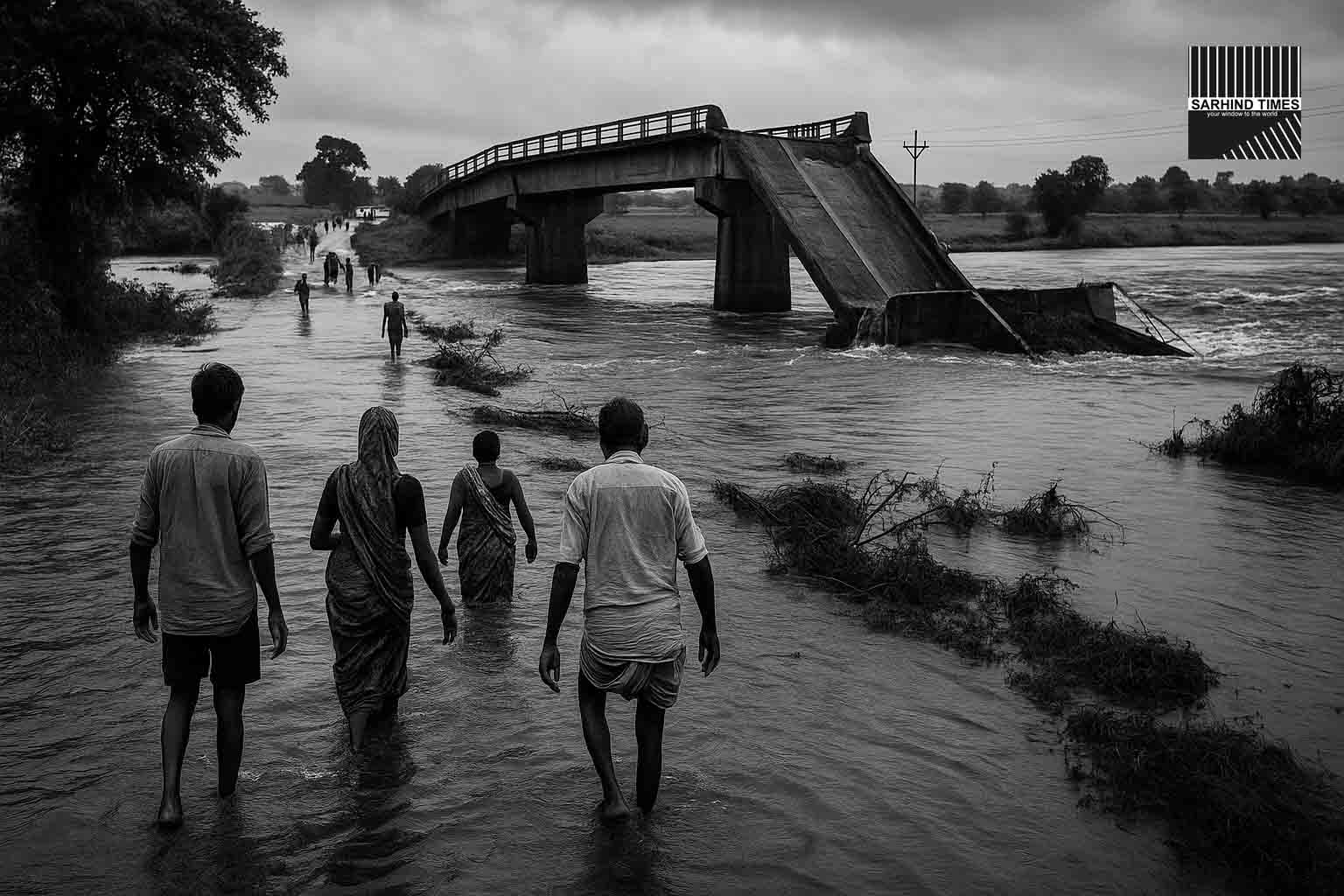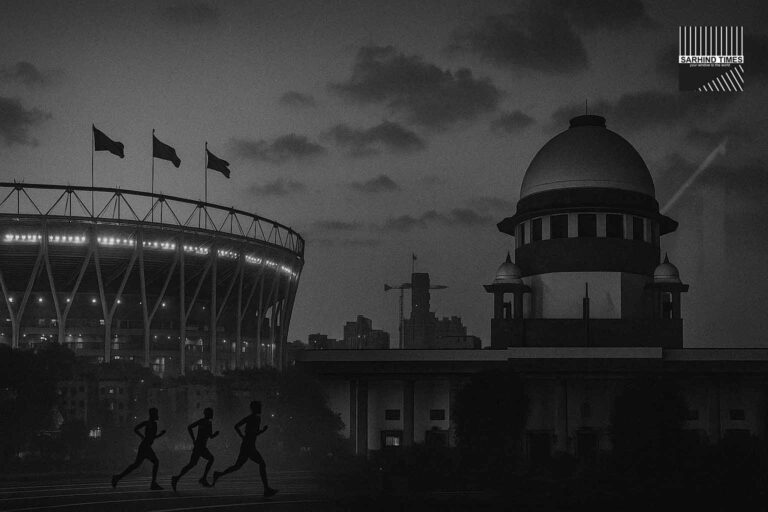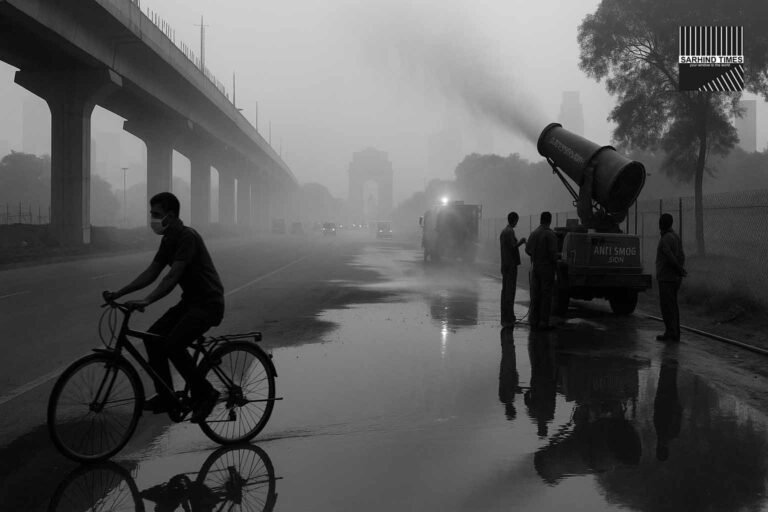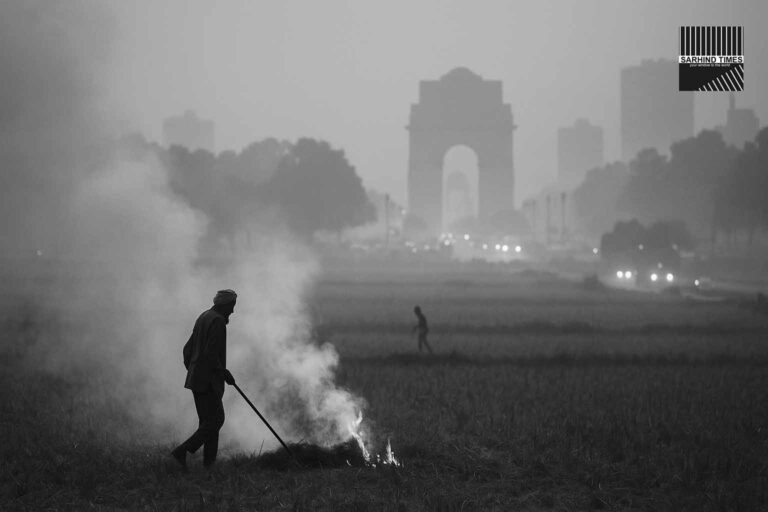20 sep 2025
For decades, Khatav tehsil in Satara district, Maharashtra, has been synonymous with drought, water scarcity, and farmer distress. Yet, in a dramatic turn, the region was drenched with 142 mm of rainfall in just 24 hours this week—one of the heaviest single-day downpours in recent memory.
The deluge, coupled with heavy showers in neighboring Man tehsil, caused localized flooding, road closures, and infrastructure damage, including the washing away of an under-construction bridge in Ambewade. Officials also confirmed sewage overflows into Kolhapur’s Rankala Lake, underscoring how sudden heavy rains strain civic systems.
This rare cloudburst in a traditionally water-starved belt has re-ignited conversations about climate variability, resilience planning, and watershed management.
The Scale of the Downpour
- Khatav tehsil: 142 mm in 24 hours.
- Man tehsil: Comparable heavy rainfall with thunderstorms.
- Kolhapur: Nullahs breached, sewage spilling into Rankala Lake.
- Ambewade: An under-construction bridge swept away.
- Yerala River: Overflowed, cutting off Mayani–Mhaswad and Mayani–Nimsod routes.
Officials described the rainfall as “unprecedented for this region,” pointing out that such volumes are typically associated with Konkan or coastal belts, not Satara’s dry interior.
Immediate Impacts
- Infrastructure Damage
- Washed-away bridge at Ambewade will delay connectivity projects.
- Rural roads submerged, isolating villages.
- Agricultural Impact
- Standing crops in low-lying areas submerged.
- Farmers worry about soil erosion and long-term productivity losses.
- Urban Challenges
- Sewage overflow in Kolhapur raised contamination risks.
- Reservoirs nearing full capacity forced controlled releases, raising downstream risks.
Response and Relief
Disaster management teams moved quickly:
- Issued advisories urging residents to avoid swollen streams.
- Deployed personnel to monitor reservoir levels near Koyna Dam, already at near capacity.
- Cleared debris from blocked rural roads to restore partial mobility.
Still, residents expressed concerns about the lack of early-warning systems in smaller villages, where alerts often arrive too late.
Climate Variability: A Growing Pattern
Experts highlight that this extreme rain is not an isolated anomaly but part of a broader pattern:
- Maharashtra’s rain distribution has become increasingly uneven.
- Interior districts, once dry, are now witnessing extreme cloudbursts.
- Short, intense bursts are replacing steady monsoon showers.
A Pune-based climate researcher noted:
“Khatav’s identity as a drought-prone region is changing. But unpredictability creates new risks—both floods and droughts can occur in the same season.”
The Drought–Flood Paradox
This incident reveals a paradox:
- Water-scarce areas like Khatav are not equipped to handle heavy rainfall.
- Lack of reservoirs, check dams, and strong drainage means water runs off quickly—causing floods but not long-term recharge.
- Villages remain vulnerable to both scarcity and excess.
Without systemic watershed management, the benefits of such rains may be lost.
Infrastructure Lessons
The washed-away bridge at Ambewade is a reminder that climate resilience must be built into projects:
- Stronger materials and foundations to withstand flash floods.
- Better mapping of floodplains before construction.
- Integrating climate projections into rural infrastructure planning.
Community Reactions
- Farmer in Khatav: “We prayed for rain, but not like this. Our crops are drowning.”
- Resident in Kolhapur: “Sewage overflow is a bigger threat than the rain—it contaminates everything.”
- Local activist: “Every year we talk of early warnings. But villages still rely on word-of-mouth alerts.”
Policy and Planning
Maharashtra’s climate adaptation strategy must now account for intra-district variability:
- Installing dense rainfall monitoring networks in drought zones.
- Building check dams, recharge ponds, and micro-reservoirs to capture sudden downpours.
- Training panchayats in flood-response protocols.
- Strengthening state disaster management communication to reach remote hamlets.
Looking Ahead
The IMD has warned of continued instability in western Maharashtra, with the possibility of more intense showers. Authorities remain on alert for:
- Rising levels at Koyna Dam and associated reservoirs.
- Further road blockages in rural belts.
- Health risks from water contamination in Kolhapur.
The longer-term question remains: how can regions like Khatav, defined for decades by drought, prepare for a future where extremes replace averages?
Conclusion
The 142 mm downpour in Khatav is a stark reminder that climate change is rewriting local weather patterns in Maharashtra. What was once drought country is now experiencing flash floods, with damaging consequences for infrastructure, agriculture, and public health.
The challenge lies in building systems that can capture the benefits of rainfall without succumbing to its risks. For Satara’s residents, the rains brought both relief and ruin—an uneasy symbol of the uncertain climate future.
#Maharashtra #Satara #Monsoon #Floods #IMD #Climate #SarhindTimes #DroughtToFlood

























+ There are no comments
Add yours